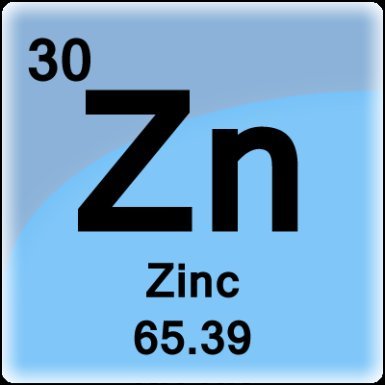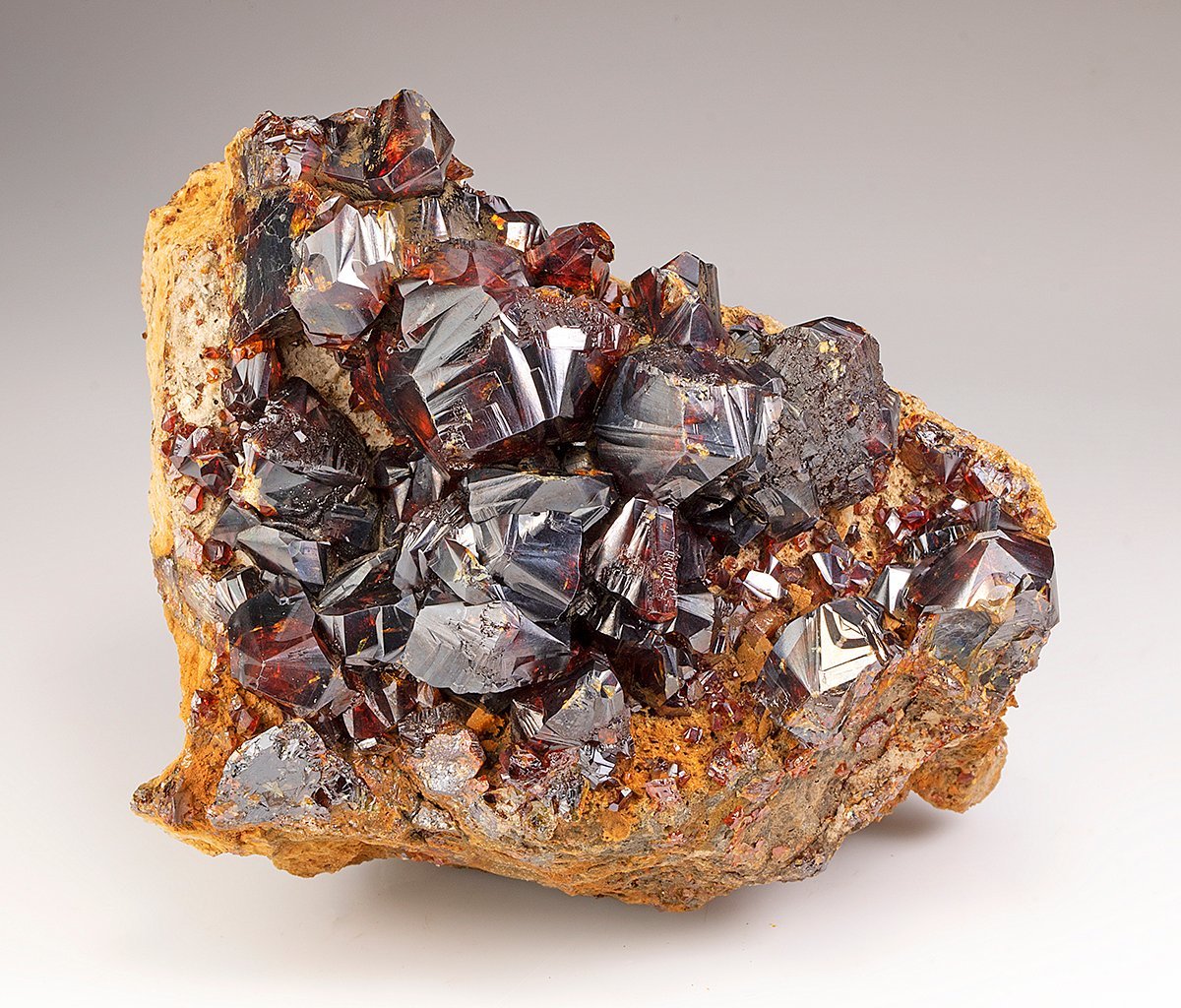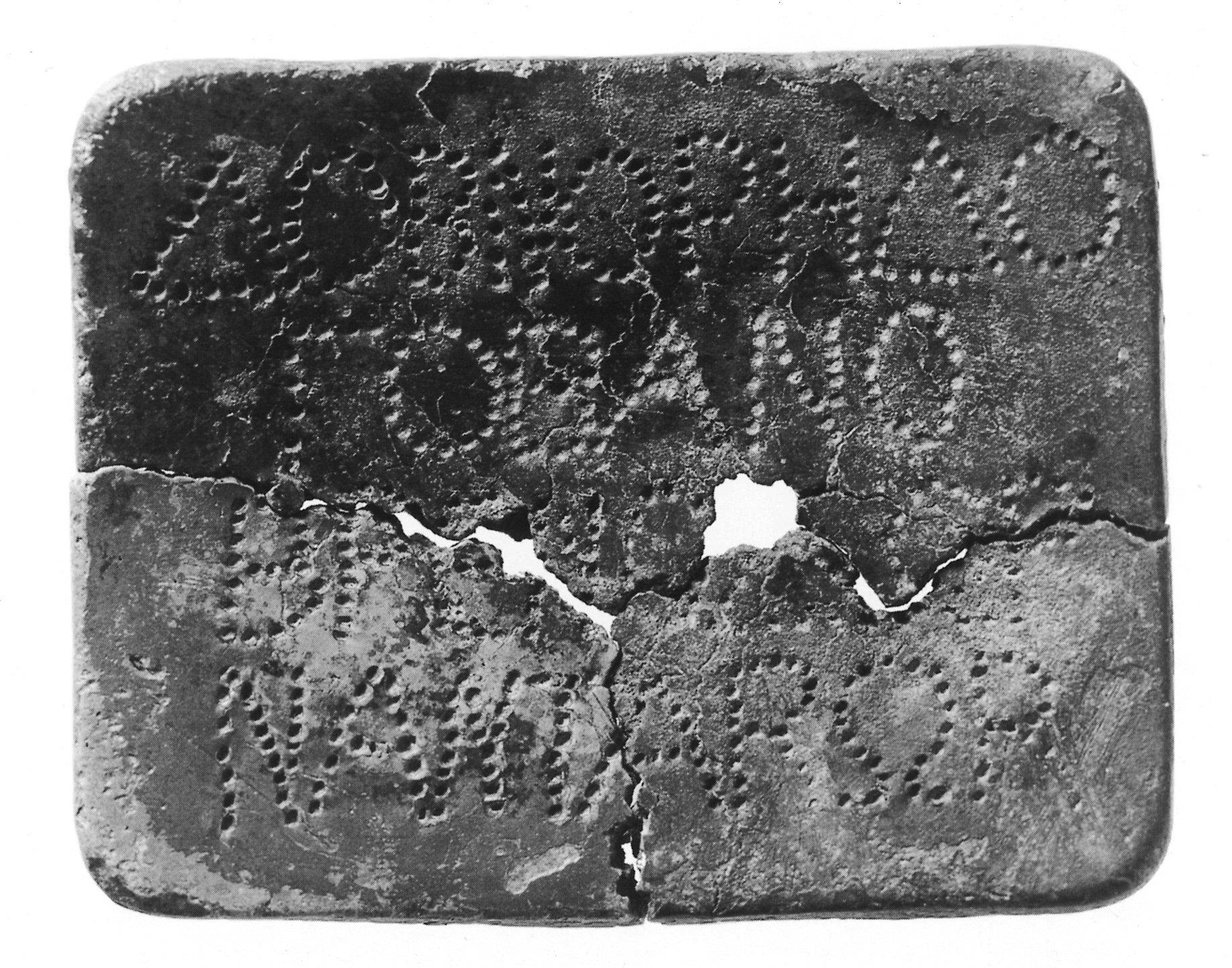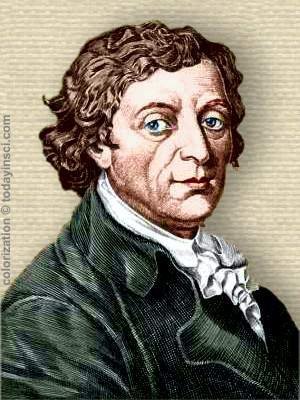
Zinc is a chemical element with the symbol Zn and atomic number 30. Zinc is a slightly brittle metal at room temperature and has a silvery-greyish appearance when oxidation is removed. It is the first element in group 12 (IIB) of the periodic table. In some respects, zinc is chemically similar to magnesium: both elements exhibit only one normal oxidation state (+2), and the Zn2+ and Mg2+ ions are of similar size. Zinc is the 24th most abundant element in Earth's crust and has five stable isotopes. The most common zinc ore is sphalerite (zinc blende), a zinc sulfide mineral. The largest workable lodes are in Australia, Asia, and the United States. Zinc is refined by froth flotation of the ore, roasting, and final extraction using electricity (electrowinning).

Paracelsus
The element was probably named by the alchemist Paracelsus after the German word Zinke (prong, tooth). German chemist Andreas Sigismund Marggraf is credited with discovering pure metallic zinc in 1746. Work by Luigi Galvani and Alessandro Volta uncovered the electrochemical properties of zinc by 1800. Corrosion-resistant zinc plating of iron (hot-dip galvanizing) is the major application for zinc. Other applications are in electrical batteries, small non-structural castings, and alloys such as brass. A variety of zinc compounds are commonly used, such as zinc carbonate and zinc gluconate (as dietary supplements), zinc chloride (in deodorants), zinc pyrithione (anti-dandruff shampoos), zinc sulfide (in luminescent paints), and dimethylzinc or diethylzinc in the organic laboratory.
Zinc is an essential mineral, including to prenatal and postnatal development. Zinc deficiency affects about two billion people in the developing world and is associated with many diseases. In children, deficiency causes growth retardation, delayed sexual maturation, infection susceptibility, and diarrhea. Enzymes with a zinc atom in the reactive center are widespread in biochemistry, such as alcohol dehydrogenase in humans. Consumption of excess zinc may cause ataxia, lethargy, and copper deficiency.
Zinc makes up about 75 ppm (0.0075%) of Earth's crust, making it the 24th most abundant element. Typical background concentrations of zinc do not exceed 1 μg/m3 in the atmosphere; 300 mg/kg in soil; 100 mg/kg in vegetation; 20 μg/L in freshwater and 5 μg/L in seawater. The element is normally found in association with other base metals such as copper and lead in ores. Zinc is a chalcophile, meaning the element is more likely to be found in minerals together with sulfur and other heavy chalcogens, rather than with the light chalcogen oxygen or with non-chalcogen electronegative elements such as the halogens. Sulfides formed as the crust solidified under the reducing conditions of the early Earth's atmosphere. Sphalerite, which is a form of zinc sulfide, is the most heavily mined zinc-containing ore because its concentrate contains 60–62% zinc.

Sphalerite
Other source minerals for zinc include smithsonite (zinc carbonate), hemimorphite (zinc silicate), wurtzite (another zinc sulfide), and sometimes hydrozincite (basic zinc carbonate). With the exception of wurtzite, all these other minerals were formed by weathering of the primordial zinc sulfides.
Identified world zinc resources total about 1.9–2.8 billion tonnes. Large deposits are in Australia, Canada and the United States, with the largest reserves in Iran. The most recent estimate of reserve base for zinc (meets specified minimum physical criteria related to current mining and production practices) was made in 2009 and calculated to be roughly 480 Mt. Zinc reserves, on the other hand, are geologically identified ore bodies whose suitability for recovery is economically based (location, grade, quality, and quantity) at the time of determination. Since exploration and mine development is an ongoing process, the amount of zinc reserves is not a fixed number and sustainability of zinc ore supplies cannot be judged by simply extrapolating the combined mine life of today's zinc mines. This concept is well supported by data from the United States Geological Survey (USGS), which illustrates that although refined zinc production increased 80% between 1990 and 2010, the reserve lifetime for zinc has remained unchanged. About 346 million tonnes have been extracted throughout history to 2002, and scholars have estimated that about 109–305 million tonnes are in use.

Ancient use
The Charaka Samhita, thought to have been written between 300 and 500 AD, mentions a metal which, when oxidized, produces pushpanjan, thought to be zinc oxide. Zinc mines at Zawar, near Udaipur in India, have been active since the Mauryan period (c. 322 and 187 BCE). The smelting of metallic zinc here, however, appears to have begun around the 12th century AD. One estimate is that this location produced an estimated million tonnes of metallic zinc and zinc oxide from the 12th to 16th centuries. Another estimate gives a total production of 60,000 tonnes of metallic zinc over this period. The Rasaratna Samuccaya, written in approximately the 13th century AD, mentions two types of zinc-containing ores: one used for metal extraction and another used for medicinal purposes. Various isolated examples of the use of impure zinc in ancient times have been discovered. Zinc ores were used to make the zinc–copper alloy brass thousands of years prior to the discovery of zinc as a separate element. Judean brass from the 14th to 10th centuries BC contains 23% zinc.

Zinc mines at Zawar
Knowledge of how to produce brass spread to Ancient Greece by the 7th century BC, but few varieties were made. Ornaments made of alloys containing 80–90% zinc, with lead, iron, antimony, and other metals making up the remainder, have been found that are 2,500 years old. A possibly prehistoric statuette containing 87.5% zinc was found in a Dacian archaeological site.
The oldest known pills were made of the zinc carbonates hydrozincite and smithsonite. The pills were used for sore eyes and were found aboard the Roman ship Relitto del Pozzino, wrecked in 140 BC.
The manufacture of brass was known to the Romans by about 30 BC. They made brass by heating powdered calamine (zinc silicate or carbonate), charcoal and copper together in a crucible. The resulting calamine brass was then either cast or hammered into shape for use in weaponry. Some coins struck by Romans in the Christian era are made of what is probably calamine brass.
Strabo writing in the 1st century BC (but quoting a now lost work of the 4th century BC historian Theopompus) mentions "drops of false silver" which when mixed with copper make brass. This may refer to small quantities of zinc that is a by-product of smelting sulfide ores. Zinc in such remnants in smelting ovens was usually discarded as it was thought to be worthless.

The Berne zinc tablet is a votive plaque dating to Roman Gaul made of an alloy that is mostly zinc.
Metallic zinc was isolated in India by 1300 AD, much earlier than in the West. Before it was isolated in Europe, it was imported from India in about 1600 CE. Postlewayt's Universal Dictionary, a contemporary source giving technological information in Europe, did not mention zinc before 1751 but the element was studied before then.
Flemish metallurgist and alchemist P. M. de Respour reported that he had extracted metallic zinc from zinc oxide in 1668. By the start of the 18th century, Étienne François Geoffroy described how zinc oxide condenses as yellow crystals on bars of iron placed above zinc ore that is being smelted. In Britain, John Lane is said to have carried out experiments to smelt zinc, probably at Landore, prior to his bankruptcy in 1726.
In 1738 in Great Britain, William Champion patented a process to extract zinc from calamine in a vertical retort-style smelter. His technique resembled that used at Zawar zinc mines in Rajasthan, but no evidence suggests he visited the Orient. Champion's process was used through 1851.

Andreas Marggraf
German chemist Andreas Marggraf normally gets credit for discovering pure metallic zinc, even though Swedish chemist Anton von Swab had distilled zinc from calamine four years previously. In his 1746 experiment, Marggraf heated a mixture of calamine and charcoal in a closed vessel without copper to obtain a metal. This procedure became commercially practical by 1752.
Now for the cache!
You are looking for a 35mm film canister. While there, visit the Bremerton 911 Memorial. There are two beams from the towers and a cornerstone from the Pentagon.